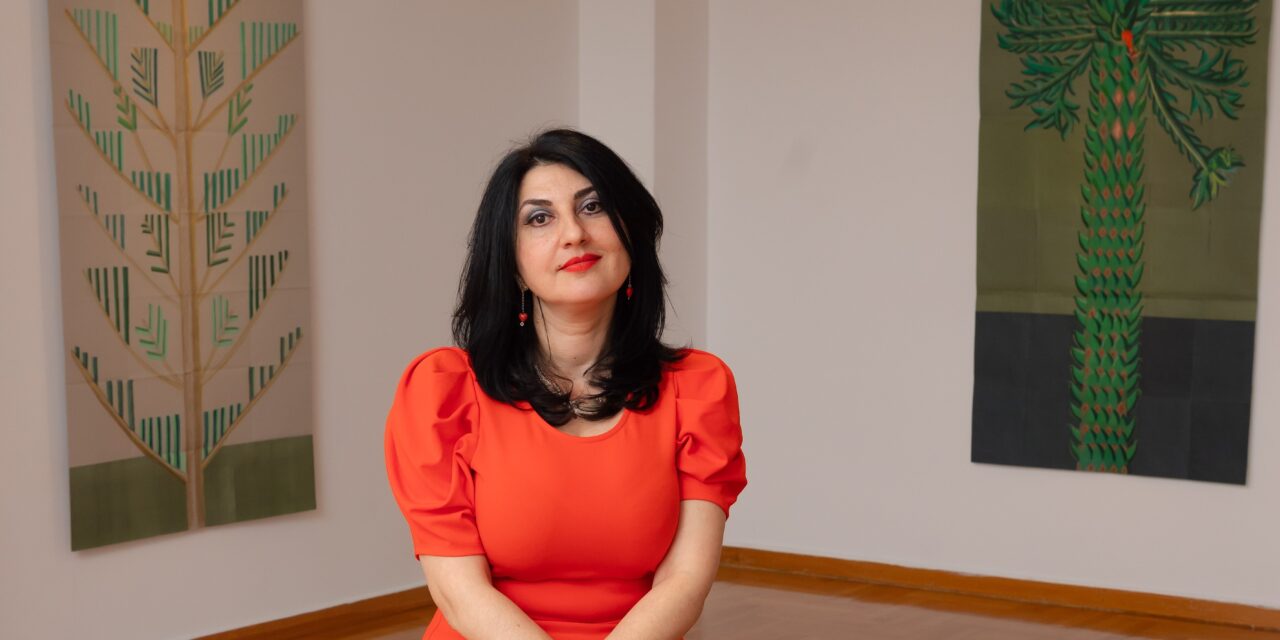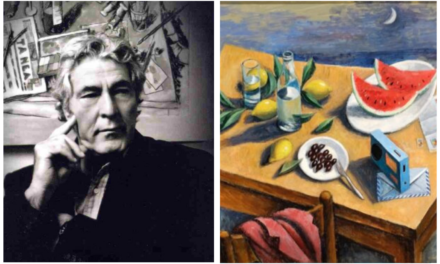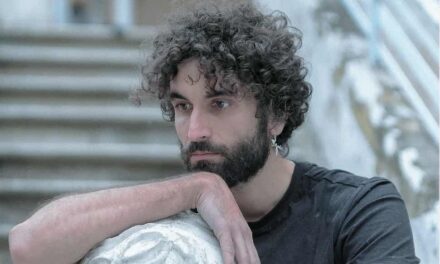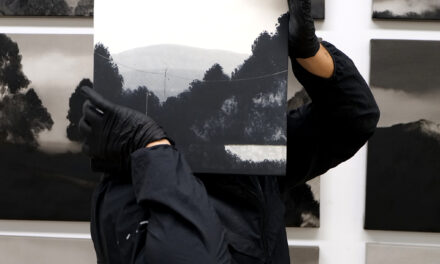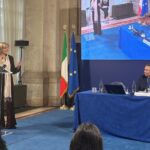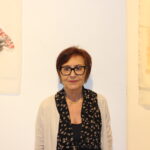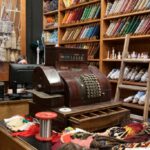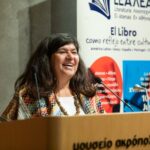Christina Mitrentse, an interdisciplinary artist who incorporates elements from her research in forestry and mycology into her practice, transforms Citronne Gallery into a peculiar forest environment. Her solo exhibition “The Wood Wide Web”, includes paintings and sculptures made from old books, collages of “controversial” books, poisonous mushrooms and tree-trunk seats where mushroom-books sprout from. Mitrentse obsessively explores the perpetual inseparable concepts of survival, demise, and revival.
Both mushrooms and books play a pivotal role in her art. As she points out herself “they are repositories of knowledge and catalysts for transformation. Both serve as intermediary spaces between death and life, embodying a dynamic interplay between death, destruction and rebirth, knowledge and understanding”.
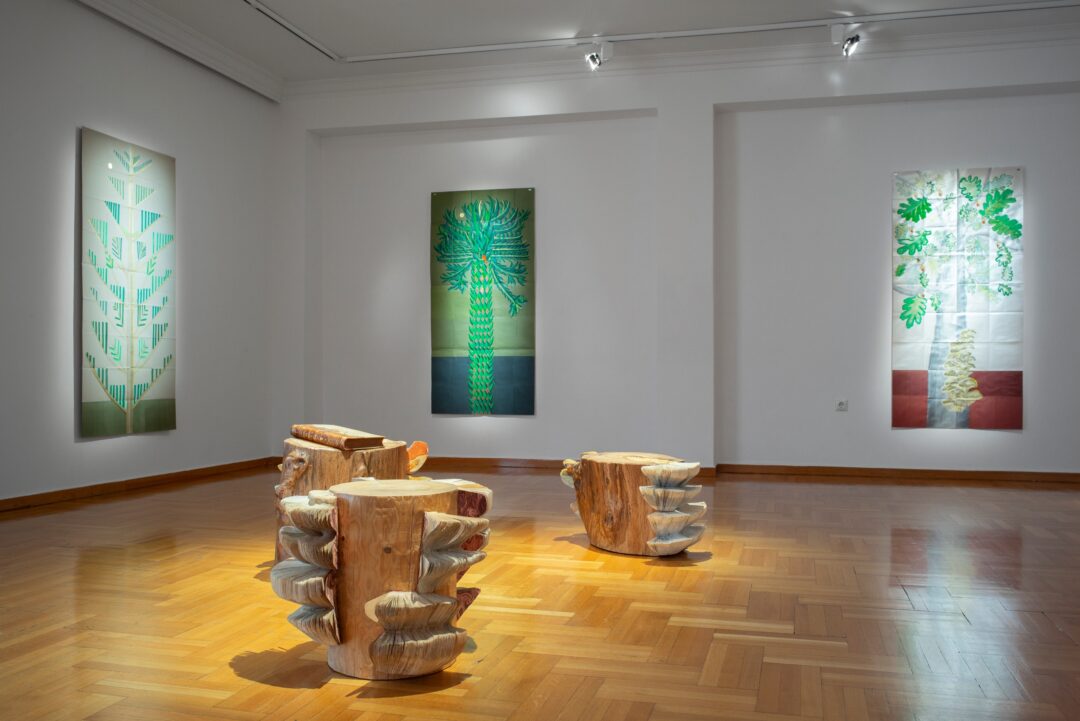
Christina Mitrentse discusses with Greek News Agenda* her subject matter, the cycle of life, the role of books and mushrooms in her art and “forbidden” forms of art in our times.
Christina Mitrentse was born in 1977 in Thessaloniki. She lived and worked in London for two decades. Her work combines different mediums, techniques – design, silk printing, biblio-sculpture, collage, installations – and processes. Her work has been shown in solo and group exhibitions in galleries, museums, and public spaces, such as the Tate Modern, The Royal Academy, ICA London, etc., and profiled in publications. Mitrentse’s artworks is also featured in major private and public collections such as the WWW Foundation, Book Art Centre NY, the National Library in Baghdad, the Jewish Museum of Greece, Fine Art Society London, Tate Archive, Collectors’ Society, Griechische Kulturstiftung, M. Altenman, Onassis Foundation, Alpha Bank, MOMus, Benaki Museum, National Bank of Greece Cultural Foundation – ΜΙΕΤ, El. Venizelos (Athens) Airport.
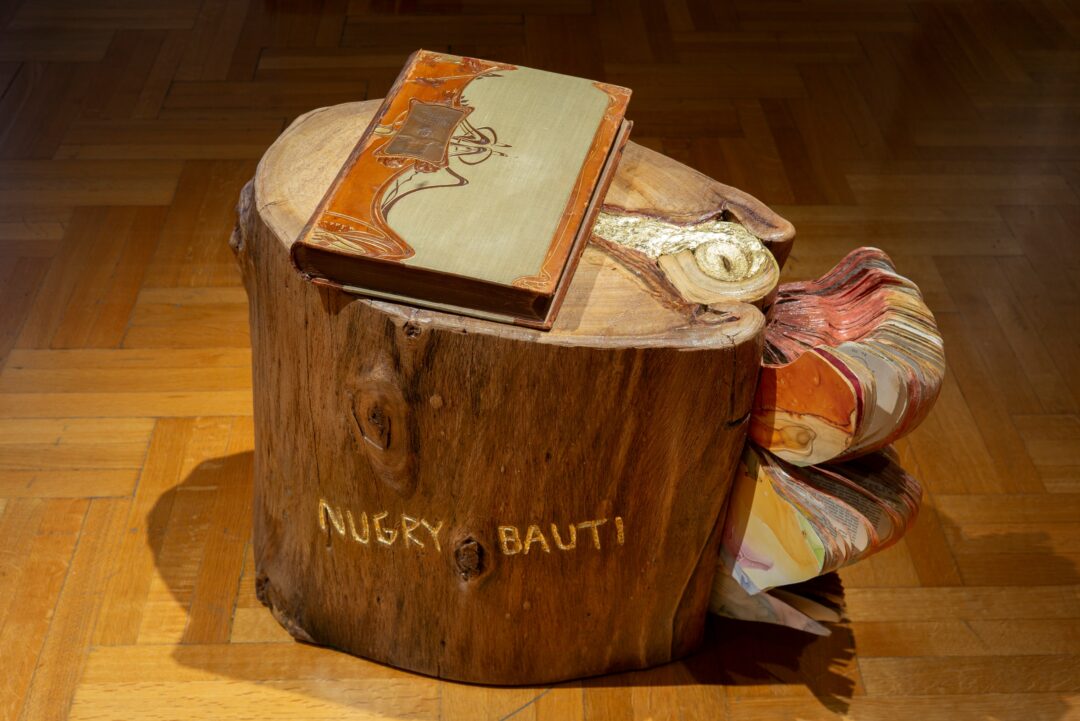
Christina Mitrentse discusses with Greek News Agenda* her subject matter, the cycle of life, the role of books and mushrooms in her art and “forbidden” forms of art in our times.
Your artistic practice combines painting, sculpture and bookbinding with elements of forestry and mycology. How did this interesting combination come about?
I am an interdisciplinary artist. In order to create a series of contemporary artworks on landscapes, I draw from my research in the fields of forestry and ecology, shaping a new visual idiom that captures the rhythms of nature through an organic network “Forests-Trees-Trunks-Paper-Books-Fungi-Mycorrhiza-Decomposition-Regeneration”. This pattern constitutes a conceptual and organic chain in my artistic practice since 2005.
As Panos Giannikopoulos emphasizes in the Wood Wide Web exhibition catalog: “The circular logic that reflects the fungal mode of synthesis and decomposition also reflects Mitrentse’s work. In the spirit of Donna Haraway’s “Staying with the Trouble” (2016), Mitrentse contemplates affinities of cellulose, ink, and spores—in a dense web that refuses to leave any entity isolated. Pages, colors, lineages, even viewers are intertwined in a perpetual puzzle, constantly renewing their material sequence. The dynamics of transformation characterize her work which combines family archives, reused agronomic volumes, and tree trunks, creating living conduits of knowledge.”
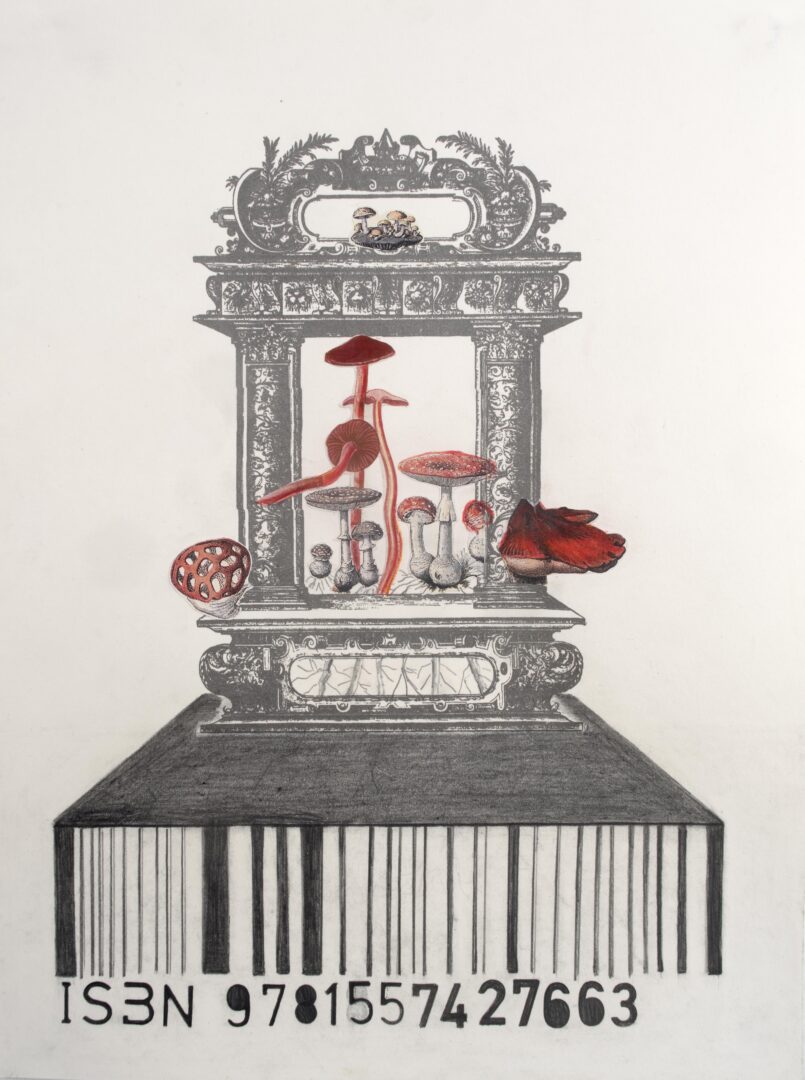
ISBN II
You are strongly concerned with the cycle of life. How do you approach this issue from an existential-philosophical perspective?
Destruction leads to rebirth. In my work, I use destruction and recycling as a system for producing new works, as part of a contemporary Book Arts movement (see History of Book Destruction). What happens when a book “prevents readability” or becomes unreadable? It must be felt! It must be absorbed and activated.
Mushrooms, like books, are repositories of knowledge and catalysts for transformation. Both serve as intermediate spaces between death and life. In this light, both become conduits of continuity, embodying the dynamic interplay between death, destruction and rebirth, knowledge and understanding. Just as fungi decompose and recombine organic matter, transforming decay into new growth, facilitating the regeneration of the natural world, books collect and disseminate human thought across generations, giving life to dormant ideas, ensuring that wisdom is reinterpreted to fuel the future.
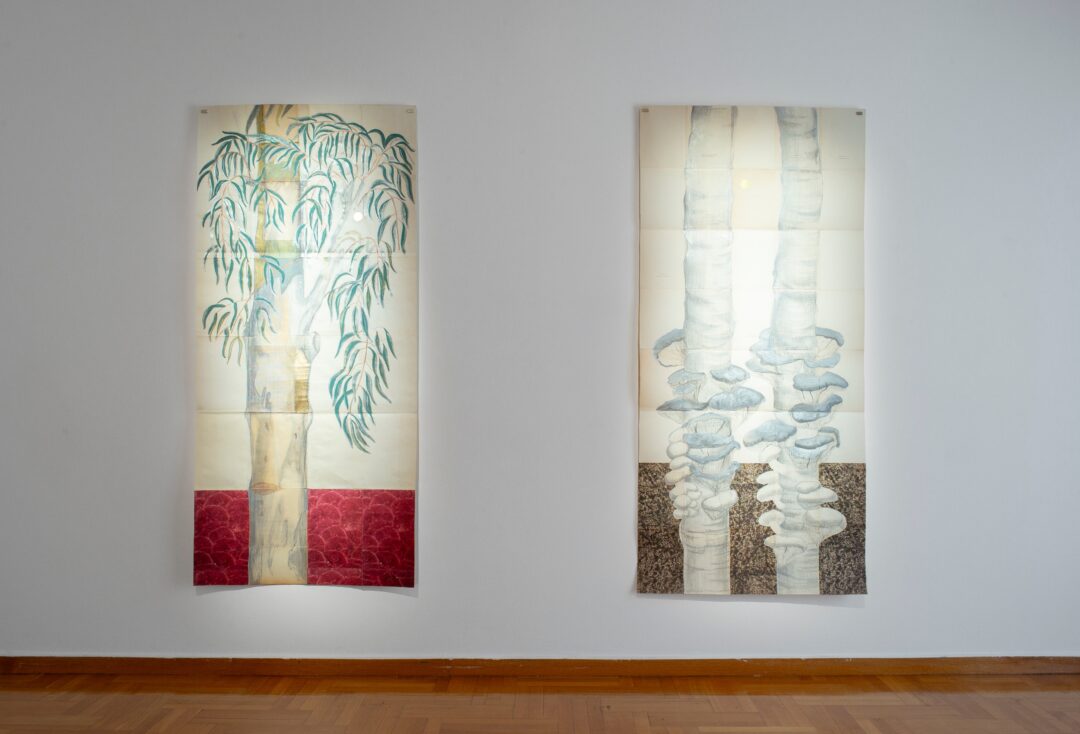
Books play a central role in your work. What do they symbolize and how do they relate to mushrooms?
Books symbolize human existence in my work. Body, mind and soul. Mushrooms, people, and books are related to each other as, within each one of these categories, there are prohibited substances. The forbidden fruit of knowledge, the banned books of totalitarian regimes, or even deadly or toxic mushrooms that are eaten only once. Terence McKenna has suggested that the forbidden fruit was a reference to psychotropic plants and fungi, specifically psilocybin mushrooms, which he believed played a central role in the evolution of the human brain. Recently, a group of researchers at Imperial College applied a mushroom treatment with positive results in patients with long-term depression. This is how the series of works entitled “Forbidden ISBN with Fungi” emerged.
Twelve small-scale still lifes on paper (pencil, collage and handmade silkscreen), where the ISBNs of banned or censored books coexist in a composition with forbidden mushrooms taken from the Larousse encyclopedia, are presented at my solo exhibition at Citronne Gallery, where I also present my series “Bookscapes”. The larger scale still lifes also incorporate recent publications on fungi, such as Yasmine Ostendorf-Rodriguez’s “Let’s Become Fungal!” (2023) and Chinese-American anthropologist Anna Tsing’s “The Mushroom at the End of the World: On the Possibility of Life in Capitalist Ruins” (2015), which describes and analyzes the globalized commodity chains of matsutake mushrooms.
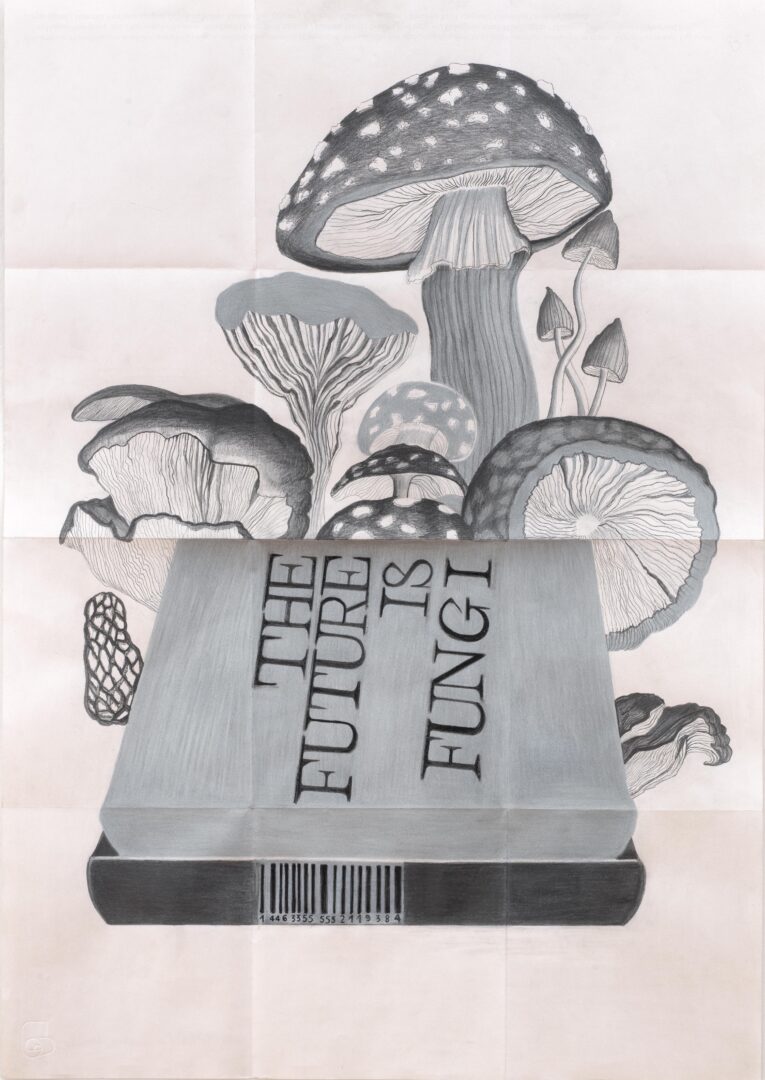
What is your reaction to “forbidden art”, if there can be such a thing?
Throughout human history, art has reflected society, its values, conflicts and aspirations. However, in many periods, artistic expression has been met with suspicion, censorship and sometimes outright prohibition. Forbidden art is evidence of the ongoing challenge between the human desire to express itself and the limitations imposed by the power and morality of the time. In the era of globalization, despite greater access to information and global interconnection, art still faces prohibitions and censorship. Contemporary art that addresses issues of gender, sexuality, religion, or politics remains controversial in many parts of the developed world. Banned artworks are more than just works that “cross the line.” They are testaments to their times, reflecting broader struggles for autonomy, expression, and power. I believe that art, in all its forms, will continue to challenge and reflect society, and this eternal dance with censorship is what keeps it vital and at the same time timeless.
Your work is characterized by dynamic interconnections that transcend conventional frameworks. This allows your works to interact with the space and the viewer. How interested are you in the emotional involvement of the viewer?
The exhibition “The Wood Wide Web” encourages the active participation of visitors, who encounter a forest within the apartment/gallery. It is an exhibition that addresses our time, one characterized by ecological disruption and the complexity of human coexistence. Visitors are invited to discussions focusing on the importance of mycology and forests for society. In the exhibition I present six recognizable trees coexisting symbiotically with mushrooms painted in a large format of 180 x 85 cm on colored paper made from book pages. Each has its own morphological and stylistic peculiarities, and together they embody personalities with anthropomorphic characteristics.
Visitors are invited to sit on “Fungi Logs–Nugrybauti”, handmade wooden stools carved from tree trunks, where books in different shapes and types of mushrooms pop up, and they can engage in discussions that address the importance of tree and forest mycology for society. The incredible properties of fungi, their history, as well as their countless uses in materials, medicine and ecology, have a positive impact on the planet. With a thoughtful and critical eye, I touch on these timeless concepts, on the one hand of books and on the other of knowledge and archetypes.
*Interview by Dora Trogadi
Photos by Studio Vaharidis courtesy of the artist and Citronne Gallery
INSTALLATION VIEWS by Frank Holbein courtesy of the artist and Citronne Gallery
TAGS: ARTS

